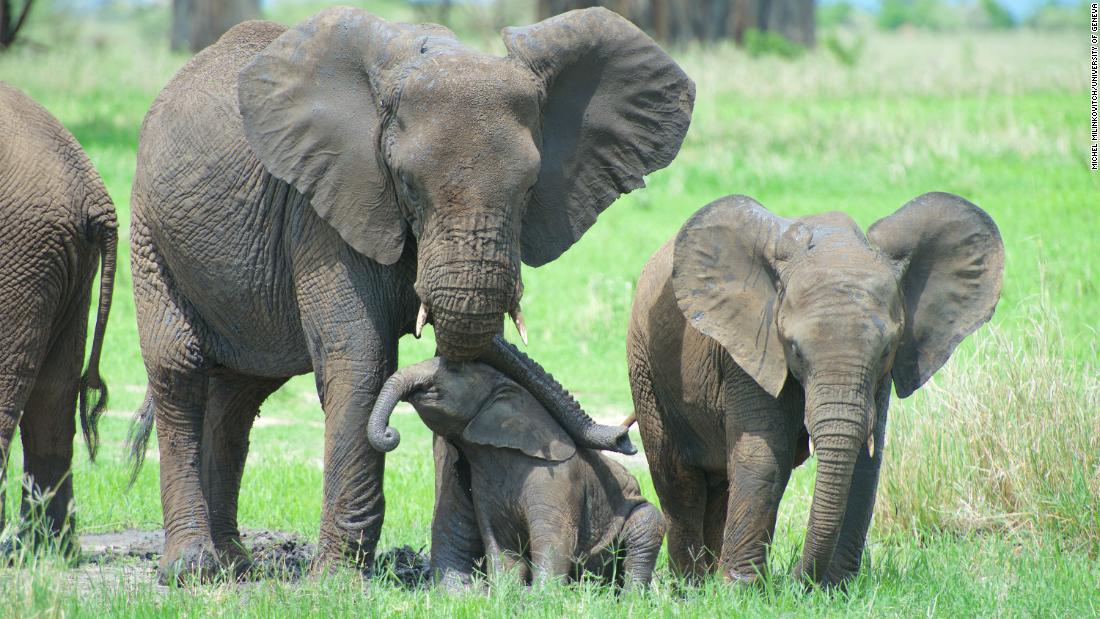
[ad_1]
Researchers at the University of Geneva and the Swiss Institute of Bioinformatics studied the skin surface of African bush elephants and realized that those wrinkles form an intricate network of tiny crevices.
This lattice pattern fractures and bends as the elephants grow, creating millions of channels across their skin. The result looks rather like the cracks that form in dried mud, in damaged asphalt, across the polar landscape of the Earth and Mars or even within natural formations like Northern Ireland’s Giant’s Causeway or eastern California’s Devils Postpile, the researchers said.
If that were true, it would imply that the cracks form because of skin shrinkage. The researchers used samples of elephant skin and ran simulations to figure out how the cracks formed, and they realized that new layers at the base layer of their skin allowed for bending at the surface. That bending created “microvalleys” on the top layer.
But how would micrometer cracks in their skin help elephants?
“It is very counterintuitive that cracking the skin could be beneficial,” study author Michel Milinkovitch, professor at the University of Geneva’s department of genetics and evolution, wrote in an email.
African elephants don’t have sweat and sebum glands to keep their skin moist in their warm, dry environment. To cope with overheating, especially due to their size, elephants are known to bathe, spray water and wallow in mud. The mud helps them regulate their body temperature, avoid parasites and protect from solar radiation.
The mud, combined with the cracks in their skin, allows the elephants to retain five to 10 times more water than if their skin were a flat surface.
“This beautiful fine pattern of millions of channels is adaptive,” Milinkovitch said. And as opposed to the scales of a crocodile’s head, which the researchers have previously studied, the skin truly cracks rather than merely creating a folded pattern.
This realization also led the researchers to establish a connection to humans.
“This study potentially establishes a link between a human pathological condition and the skin of African elephants,” Milinkovitch said. “Strikingly, we show strong similarities between the normal skin morphology of African elephants and that of humans affected by ‘ichthyosis vulgaris,’ a common genetic disorder affecting about 1 in 250 people that is known to impact shedding of the skin and cause dry, scaly skin.”
If future studies confirm this link, it would be evidence of how an unfavorable mutation in humans is a helpful adaptation in elephants.
Going forward, Milinkovitch would like to have the chance to study another newborn elephant and follow its progress.
“We would like to follow the cracking on the skin of a baby African elephant to understand the dynamic of the process,” he said. “Are the cracks appearing everywhere or do they appear in a specific place and then propagate? Does it take … weeks or does it take six months? It’s a new, beautiful example of how physical processes are involved in the development of animal forms and shapes.”
Source link


